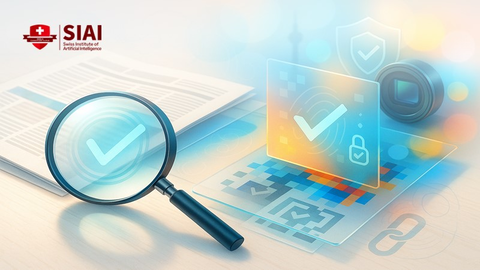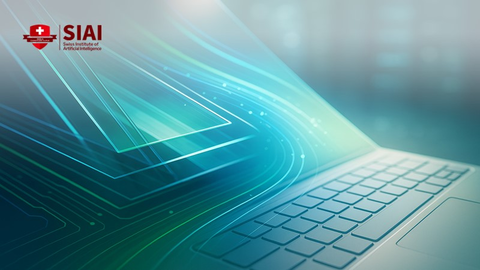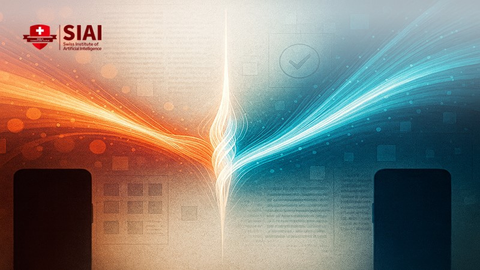[해외 DS] 디지털에서 All-아날로그로, '풀 악셀(ACCEL)' 밟는 中 AI 반도체
입력
수정
최신 GPU보다 3000배 빠르고 400만 배 더 효율적인 컴퓨터 비전 프로세서 개발 빛을 이용한 포토닉 컴퓨팅으로 기존 프로세서 한계 극복 웨어러블 기기, 자율주행, 스마트 팩토리 등 다양한 분야에 적용 기대
[해외DS]는 해외 유수의 데이터 사이언스 전문지들에서 전하는 업계 전문가들의 의견을 담았습니다. 저희 데이터 사이언스 경영 연구소 (GIAI R&D Korea)에서 영어 원문 공개 조건으로 콘텐츠 제휴가 진행 중입니다.

중국 칭화대학교의 과학자들은 최신 GPU보다 3,000배 빠르고 400만 배 더 효율적인 컴퓨터 비전 프로세서인 완전 아날로그 광전자 ACCEL 칩을 개발했다고 밝혔다. 전자 기술과 광학 기술이 결합한 이 칩은 컴퓨터 비전 작업에서 전례 없는 전력 효율성과 최고의 컴퓨팅 속도를 자랑한다.
AI 반도체 기술의 패러다임 전환, 불연속형에서 연속형으로
기존 프로세서는 자율주행, 로봇 공학, 의료 진단과 같은 컴퓨터 비전 문제를 처리할 때 처리 속도가 제한적이며 막대한 전력을 소비해 왔다. 이러한 작업에는 고해상도 이미지 처리, 정확한 분류, 매우 짧은 지연 시간이 요구된다. ACCEL 칩은 빛을 이용해 정보를 처리하는 포토닉 컴퓨팅으로 위의 문제에 새롭게 접근했다. 이는 기존 칩에서 사용되는 전류 기반 컴퓨팅에서 벗어난 시도다. 회절 광학 아날로그 컴퓨팅(OAC)과 전자 아날로그 컴퓨팅(EAC)을 단일 칩에 통합함으로써 ACCEL은 놀라운 에너지 효율과 컴퓨팅 속도를 기록했다.
OAC 방식은 회절을 통한 광파의 조작을 통해 정보를 인코딩하고 처리한다. 빛에 의해 생성되는 간섭 패턴을 사용하여 아날로그 방식으로 계산을 수행하며, 데이터를 개별적인 디지털 단계가 아닌 연속적으로 처리한다. EAC 방식은 전자 부품을 사용하여 연속적인 물리량을 조작할 수 있다. 0과 1 형태의 디지털 신호로 작업하는 대신, EAC에는 끊임없이 변화하는 아날로그 신호를 사용한다.
광자 컴퓨팅에 적용되는 원리 중 하나는 간섭과 중첩이다. 광자는 서로 간섭하여 건설적이거나 파괴적인 간섭을 일으킬 수 있는데, 이 속성을 통해 칩은 복잡한 연산을 효율적으로 수행할 수 있다. 데이터 전송에도 광자를 사용하여 칩 내부와 연결된 구성 요소 간에 정보를 전달하여 고속 통신을 달성하고 지연 시간을 줄일 수 있게 됐다. 또한 기존 프로세스처럼 병렬로 조작할 수 있으므로 여러 계산을 동시에 수행할 수 있어 칩의 처리 속도가 빠르다.
경쟁력 있는 연구 성과, 엔비디아보다 한참 앞서는 성능
ACCEL 이미지 프로세싱은 아날로그-디지털 변환기(ADC)가 필요하지 않고 빛으로 유도된 광전류를 직접 계산하여 지연 시간을 크게 줄였다. ACCEL은 와트당 74.8페타옵스의 시스템 전력 효율을 달성하며 현재 GPU보다 3배 이상 높은 성능을 자랑한다. 또한 초당 4.6페타 연산의 컴퓨팅 속도를 제공하며, 99% 이상의 계산은 광학적으로 수행된다. 광전자 컴퓨팅과 적응형 학습을 결합해 ACCEL은 다양한 작업에서 경쟁력 있는 정확도를 보였다. 패션-MNIST, 이미지넷 3등급 분류, 타임랩스 비디오 인식 작업에서 각각 85.5%, 82.0%, 92.6%의 정확도를 달성했으며, 특히 저조도 환경에서도 뛰어난 성능을 보여 휴대용 기기, 자율주행, 산업용 애플리케이션에 적합함을 증명했다.
광자는 전류처럼 열을 발생시키지 않기 때문에 에너지 효율이 높아서 추가적인 성능 향상과 소형화를 위한 기반도 마련됐다. 이러한 연구 성과는 네이처 저널에 발표되었으며, 연구진은 이를 사회적 요구에 부합하는 애플리케이션으로 발전시키는 것이 중요하다고 강조했다. 네이처 리서치 브리핑 저널의 전문가들은 ACCEL이 빠르게 현실 세계에서 사용될 것으로 기대하며, 해당 기술은 예상보다 훨씬 빠른 시기에 일상생활에서 역할을 수행할 것으로 전망했다.
ACCEL의 한계와 그 잠재력
하지만 ACCEL 칩은 아날로그 컴퓨팅 아키텍처로 인해 특정 작업에 특화되어 있어 여러 프로그램 실행이나 파일 압축과 같은 일반적인 컴퓨팅에는 적합하지 않다. 아날로그 컴퓨팅은 물리적 특성을 사용하여 물리량 간의 수학적 관계를 설정하기 때문에 결과의 범위와 정확성에 오차가 있다. 즉 다른 문제를 해결할 때 매번 구조와 요소를 다시 조정해야 하는 제약이 발생한다.
그런데도, 광자의 특성을 활용하여 놀라운 속도와 에너지 효율성을 달성함으로써 광자 컴퓨팅의 획기적인 발전을 이룩했다. 이 혁신은 기존 전자칩과 관련된 에너지 및 열 문제를 해결하면서 특정 AI 애플리케이션과 산업을 변화시킬 수 있는 잠재력을 가지고 있다. 컴퓨터나 스마트폰의 칩을 즉각적으로 대체할 수는 없지만, 전력 소비가 적고 에너지 효율이 뛰어나 웨어러블 기기의 주요 후보다. 그리고 감지 프로세스 중에 직접 계산을 수행할 수 있는 고유한 기능 덕분에 자율 주행 차량, 스마트 팩토리, 그리고 트래픽 분석 분야에서 경쟁 우위를 점할 수 있을 것으로 기대된다.
The Chinese have developed a computer vision processor that is 3,000 times faster and 4 million times more efficient than a modern GPU
Scientists at China’s Tsinghua University have developed a fully analog photoelectronic ACCEL chip that promises to revolutionize high-speed computer vision applications. The chip, which combines electronic and optical technologies, is capable of demonstrating unprecedented power efficiency and highest computing speed for computer vision tasks. In this area, the new chip is radically superior to modern GPUs.
Traditional processors have limited processing speeds and consume enormous amounts of power when solving computer vision problems such as image recognition for autonomous driving, robotics and medical diagnostics. These tasks require high-resolution image processing, accurate classification, and extremely low latency.
The ACCEL chip takes advantage of the emerging field of photonic computing, which uses light to process information. By integrating diffractive optical analog computing (OAC) and electronic analog computing (EAC) on a single chip, ACCEL achieves remarkable energy efficiency and computing speed.
The OAC method uses the manipulation of light waves through diffraction to encode and process information. Using interference patterns created by light, calculations are performed in an analog fashion, processing the data continuously rather than in discrete digital steps. The EAC method uses electronic components to manipulate continuous physical quantities. Instead of working with digital signals in the form of zeros and ones, EAC uses constantly changing analog signals.
Both methods provide advantages for certain types of computers and make it easier to develop high-speed vision problems.
ACCEL image processing does not require an ADC to convert the image, but directly uses light-induced photocurrents for calculations, resulting in significantly reduced latency. ACCEL achieves system power efficiency of 74.8 peta-ops per watt, more than three orders of magnitude higher than current GPUs. Computing speeds reach 4.6 peta operations per second, with more than 99% of calculations performed optically.
By integrating optoelectronic computing and adaptive learning, ACCEL achieves competitive object classification accuracy across a variety of tasks. The new chip achieved accuracies of 85.5%, 82.0%, and 92.6% for Fashion-MNIST, ImageNet 3-class classification, and time-lapse video recognition tasks, respectively. In particular, ACCEL has high reliability even in low light conditions, making it suitable for portable devices, autonomous driving and industrial applications.
The new chip’s extremely low power consumption significantly reduces heat dissipation, paving the way for further improvements and miniaturization. Unlike traditional optoelectronic digital computing systems, ACCEL flexibly combines diffractive optical computing and electronic analog computing, and its architecture achieves scalability, nonlinearity and high adaptability.
In a study published in the journal Nature, researchers found: “Developing a computer system based on a completely new principle is a huge task. More important, however, is the successful translation of this next-generation computing architecture into real-world applications that meet the critical needs of society.”
In a review of the study published in the journal Nature’s Research Briefing, experts expressed their belief “ACCEL could ensure that these architectures play a role in our daily lives much sooner than expected.”
Everything new is undoubtedly the forgotten old. The very first analogue computing device is the slide rule, which is well known to the older generation.
Another well-known example of analog computing devices is the MH-7 desktop analog computer developed in 1955. She successfully solved ordinary differential equations up to the 6th order. No less successfully, with the help of such machines, mathematical models of physical processes were created, which were used to solve automated process control problems.
In an analog computer (AVM), the instantaneous value of the original variable quantity is linked to the instantaneous value of another quantity, which often differs from the original physical nature and scaling factor. Each elementary mathematical operation usually corresponds to a physical law that establishes mathematical relationships between physical quantities at the output and input (e.g. Ohm’s law).
Features of the representation of initial quantities and the construction of algorithms determine the high speed of AVM operation and ease of programming, but limit the scope and accuracy of the obtained result. AVM is characterized by low universality (algorithmic limitation) – when solving problems of a different class, it is necessary to rebuild the structure of the machine and the number of crucial elements.
And now we are witnessing how, in a world of seemingly victorious digital technologies, analog data processing, which has reached a new level of development, is being used again.





















